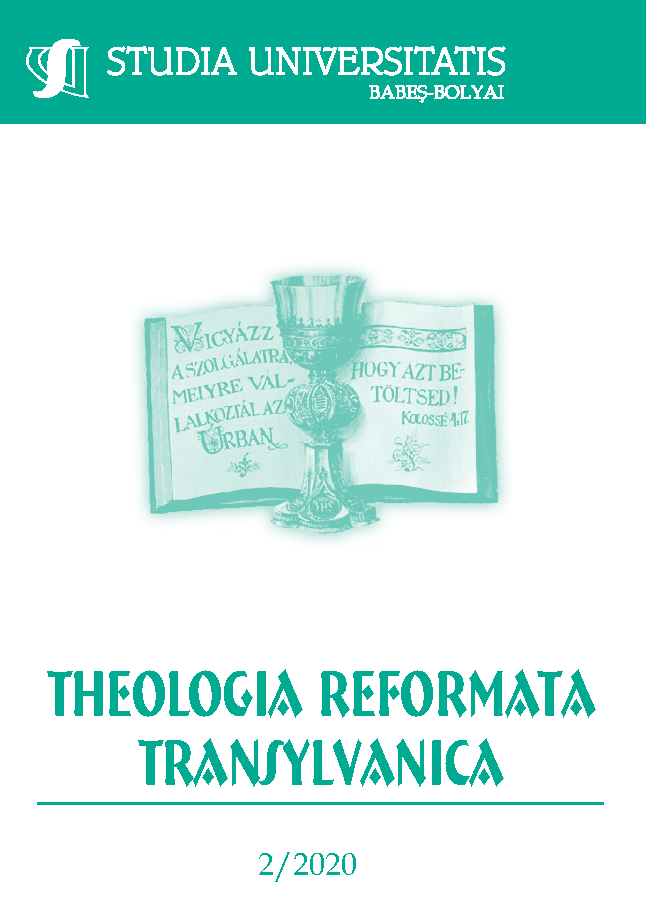Religion and Identity – Anthropological Guiding Lines
DOI:
https://doi.org/10.24193/subbtref.65.2.11Keywords:
church, faith, state entities, globalization, identity, nation, religion.Abstract
The human being is homo religiosus through his ability to experience the sacred, laying special emphasis on the meaning of existence of all things, expressed afterwards in a metaphysical interpretation concealed behind symbolic-religious language. One of the most important processes of integration into reality is self-identification as a person and gaining a group identity –processes that take different shapes over the history of human existence. The formation of state entities has always been preceded by a process of creating a social identity that manifests itself through the spiritual life materialized in culture and religion. These processes have led to the birth of mediaeval states and then to the shaping of modern Europe, necessary to the deconstructions and reconstructions in the inter-war time. These processes are also visible today during cultural globalization. What we need is a critical approach on unity in diversity that characterizes humanity in history and that will shape the future evolution of humanity.References
BUZALIC, Alexandru (2016): Migrație și religie. (ebook). Cluj-Napoca, Editura Presa Universitară Clujeană.
BUZALIC, Alexandru – BUZALIC Anca (2010):Psihologia religiei. Galaxia Gutenberg. Codex Canonum Ecclesiarum Orientalium (1997). Libreria Editrice Vaticana.
DOUGLAS, Allen (1978): Structure and Creativity in Religion: Hermeneutics in Mircea Eliade’s Phenomenology and New Directions. The Hague, Mouton.
EDMOND, Marc (2005): Psychologie de l’identité. Soi et le groupe. Paris, Dunod.
ELIADE, Mircea (1971): La nostalgie des origines. Paris, Gallimard.
ELIADE, Mircea (1987): Le Sacré et le Profane.Collection Folio essais (n° 82). Paris, Gallimard.
GIUST-DESPRAIRIES, Florence (2002): Approche psychosociale clinique de l’identité. In: Recherche & Formation 41. Les dynamiques identitaires: questions pour la recherche et la formation, sous la direction de Mokhtar Kaddouri.
GUYONNAUD, Jean-Paul – MEYER, Richard – DESCAMPS M.A. (1997): La dimension spirituelle en psychothérapie. Corps et Transpersonnel. Strasbourg, Editions Somatothérapie.
HUNTINGTON, Samuel P. (2002): Ciocnirea civilizațiilor și refacerea ordinii mondiale. Bucharest, Antet.
KRĄPIEC, Mieczyslaw Albert (1988): Dzieła, Ja – człowiek. Lublin,Towarzystwo Naukowe Katolickiego Uniwersytetu Lubelskiego.
LICATA, Laurent (2007): La théorie de l’identité sociale et la théorie de l’auto-catégorisation: le Soi, le groupe et le changement social. In: Revue de Psychologie Sociale 1.
MARGA, Andrei (2014): Religia în era globalizării. Bucharest: Editura Academiei Române.
MÜLLER, Klaus – STRIET, Magnus (eds.) (2005): Dogma und Denkform. Strittiges in der Grundlegung von Offenbarungsbegriff und Gottesgedanke. Regensburg, Verlag Friedrich Pustet.
RAHNER, Karl (1965): Saggi di antropologia soprannaturale. Roma, Edizioni Paoline.
SCHLEIERMACHER, Friedriech Daniel Ernst (1838): Hermeneutik und Kritik. Berlin, Reimer.
STRIET, Magnus (ed.) (2008): Wiederkehr des Atheismus. Fluch oder Segen für die Theologie. Freiburg–Basel–Wien, Herder.
TESSIER, Robert (1994): Déplacement du sacré dans la société moderne: culture, politique, économie, écologie. Québec, Bellarmin.
Downloads
Published
How to Cite
Issue
Section
License
Copyright (c) 2020 Studia Universitatis Babeș-Bolyai Theologia Reformata Transylvanica

This work is licensed under a Creative Commons Attribution-NonCommercial-NoDerivatives 4.0 International License.



